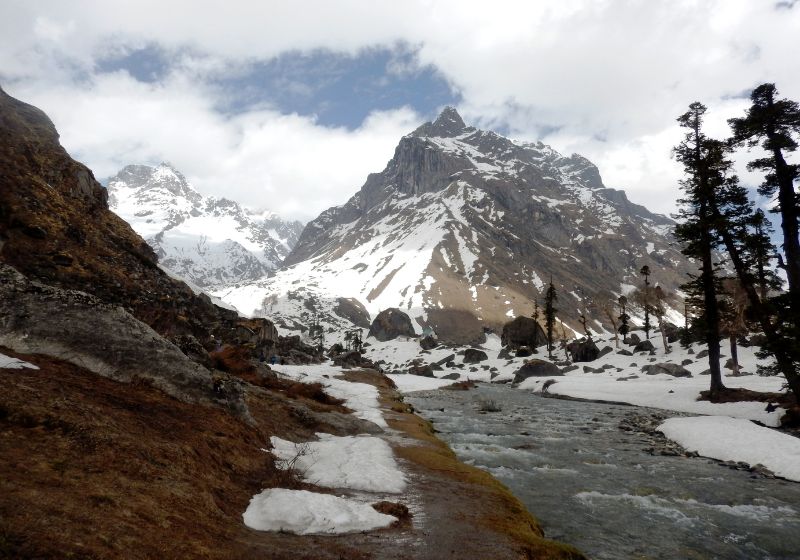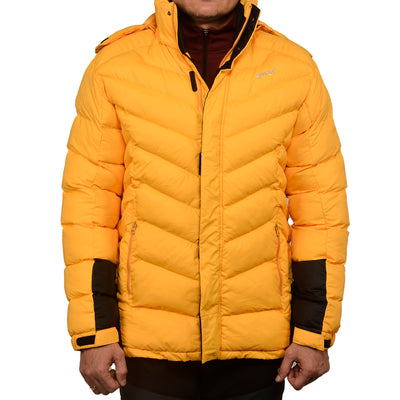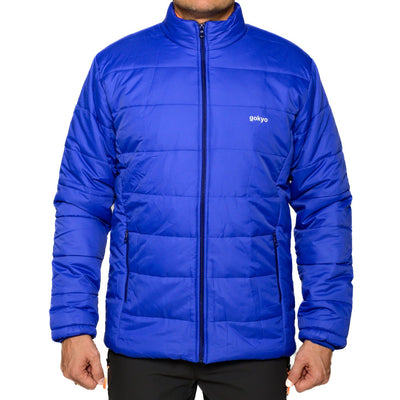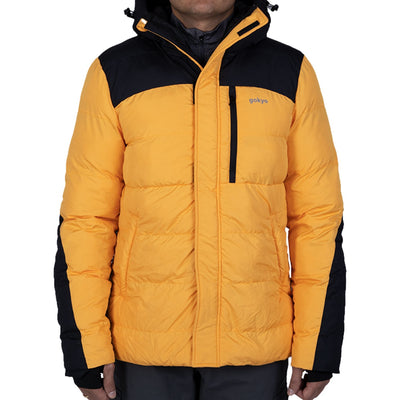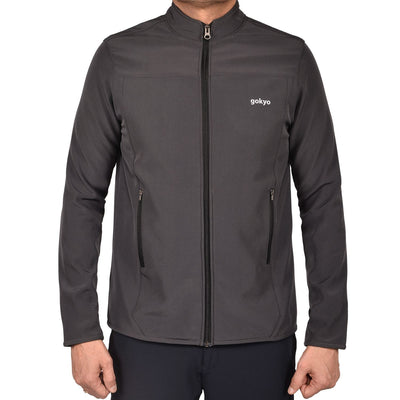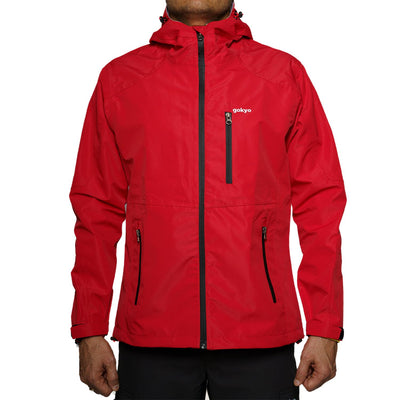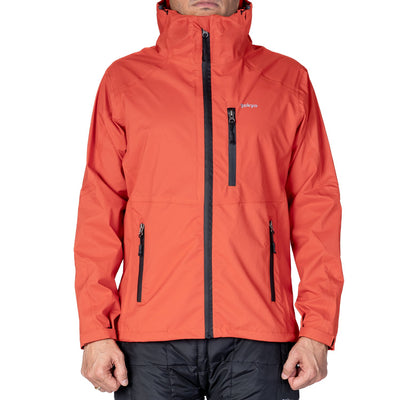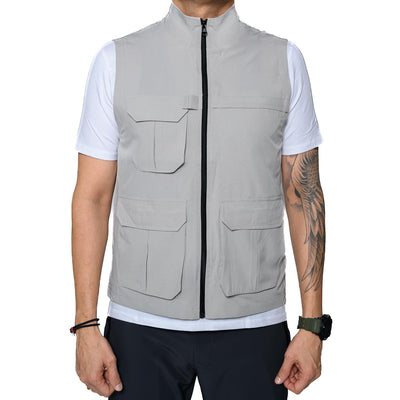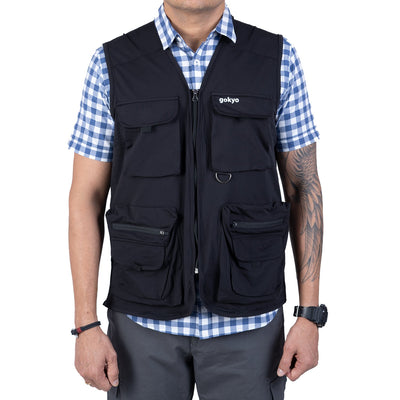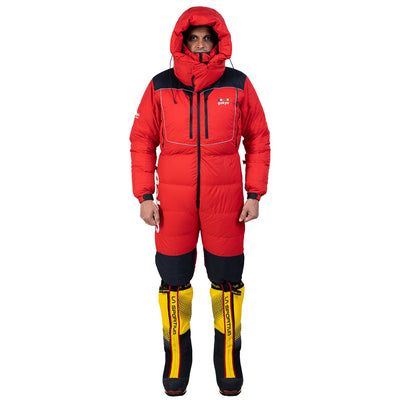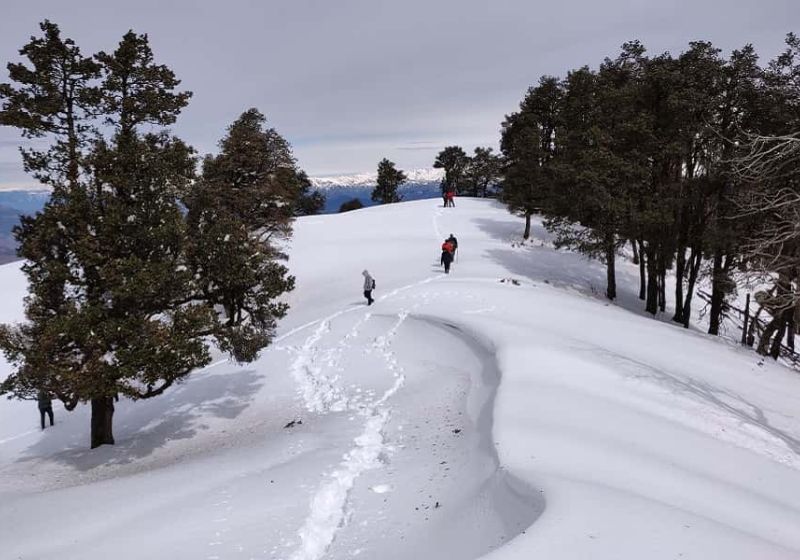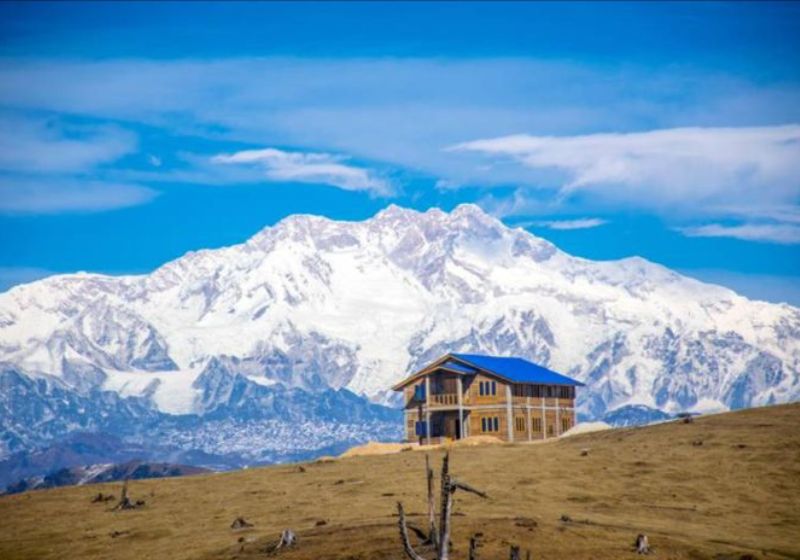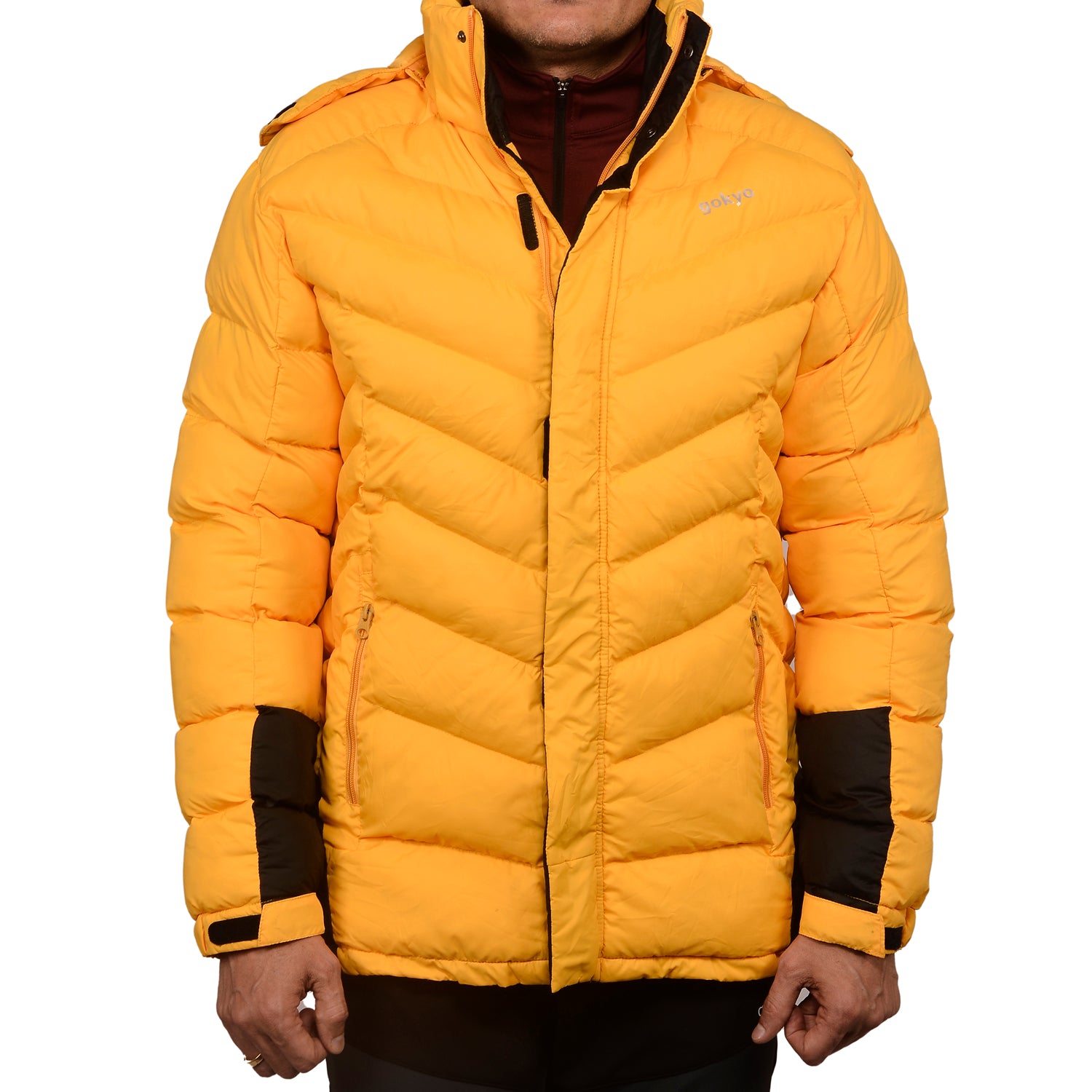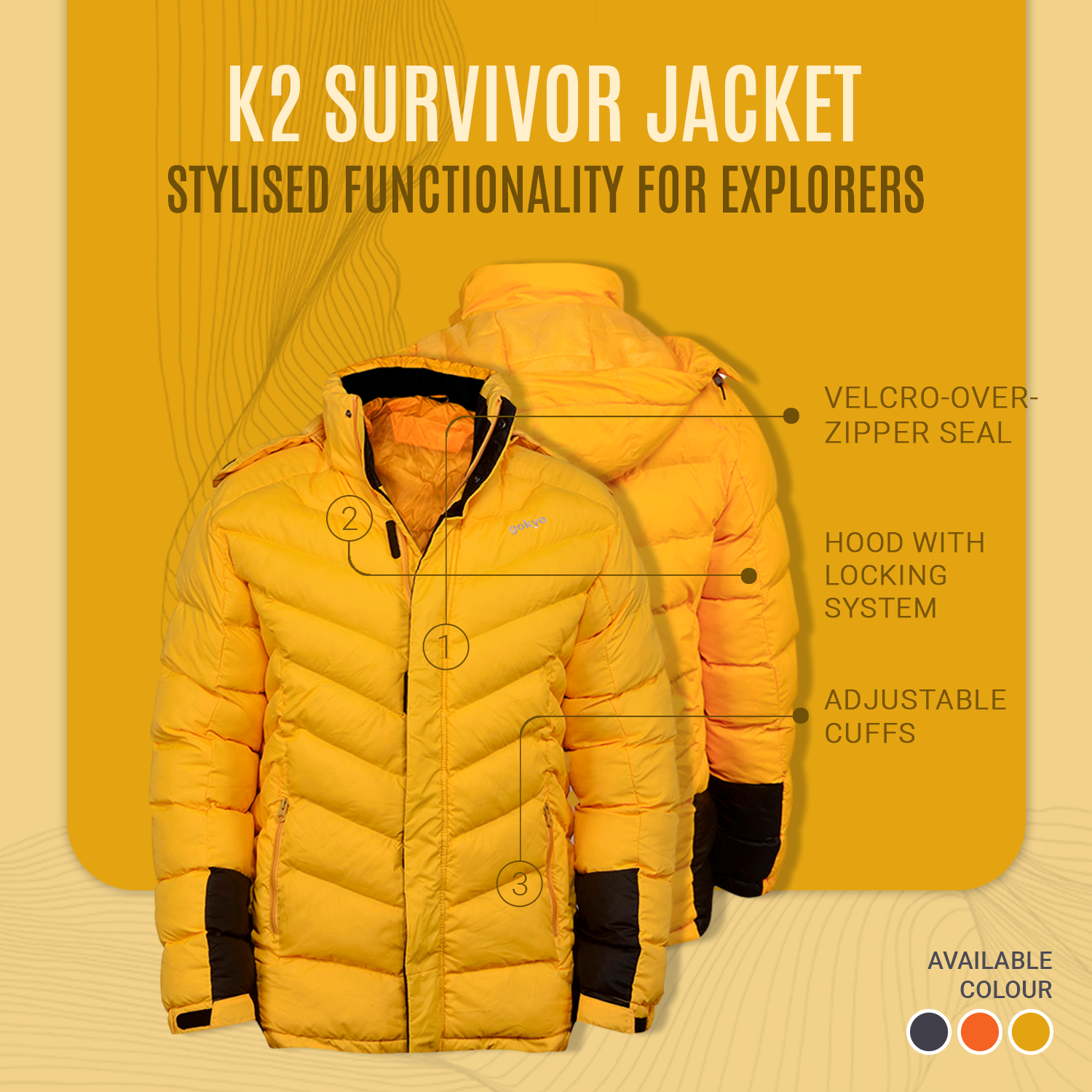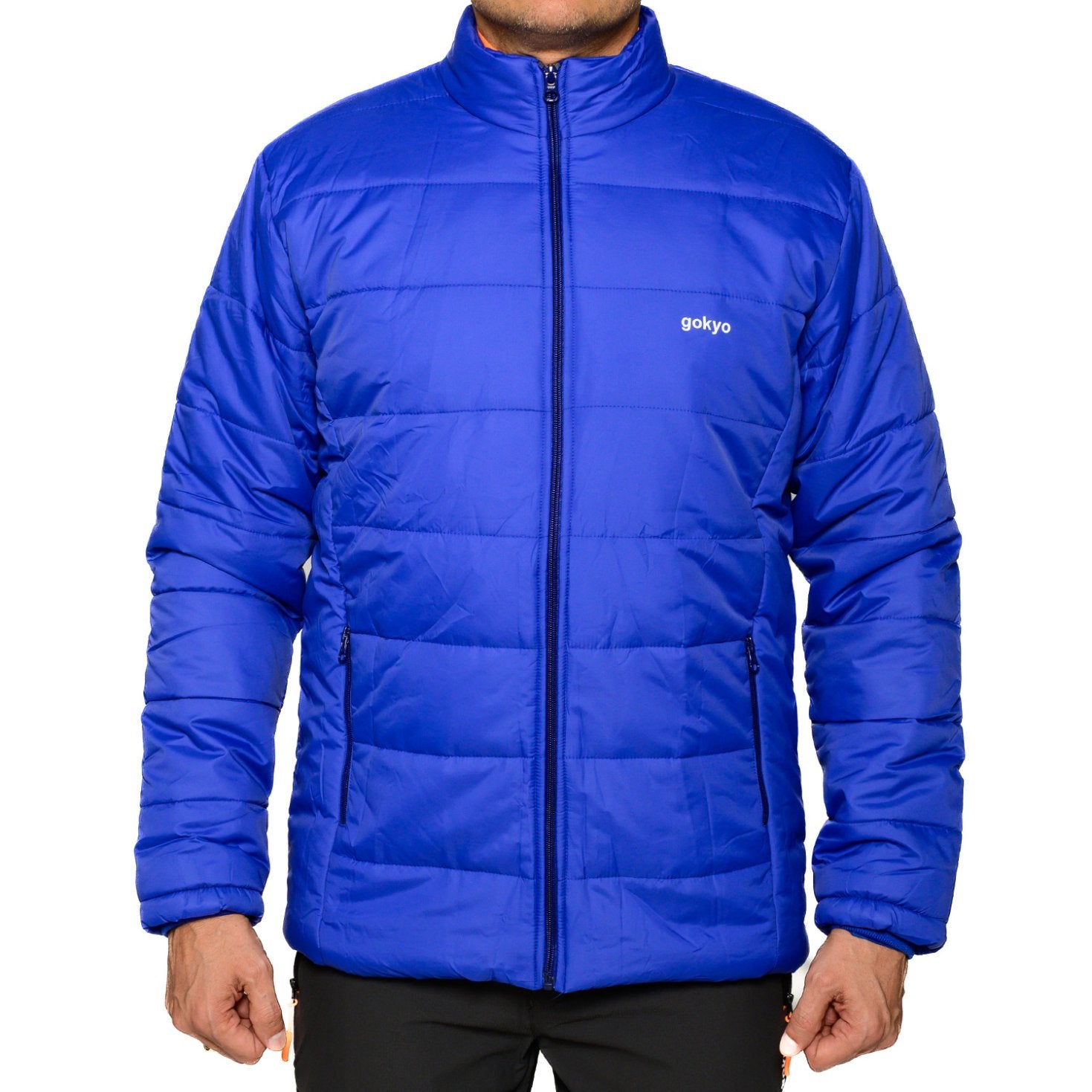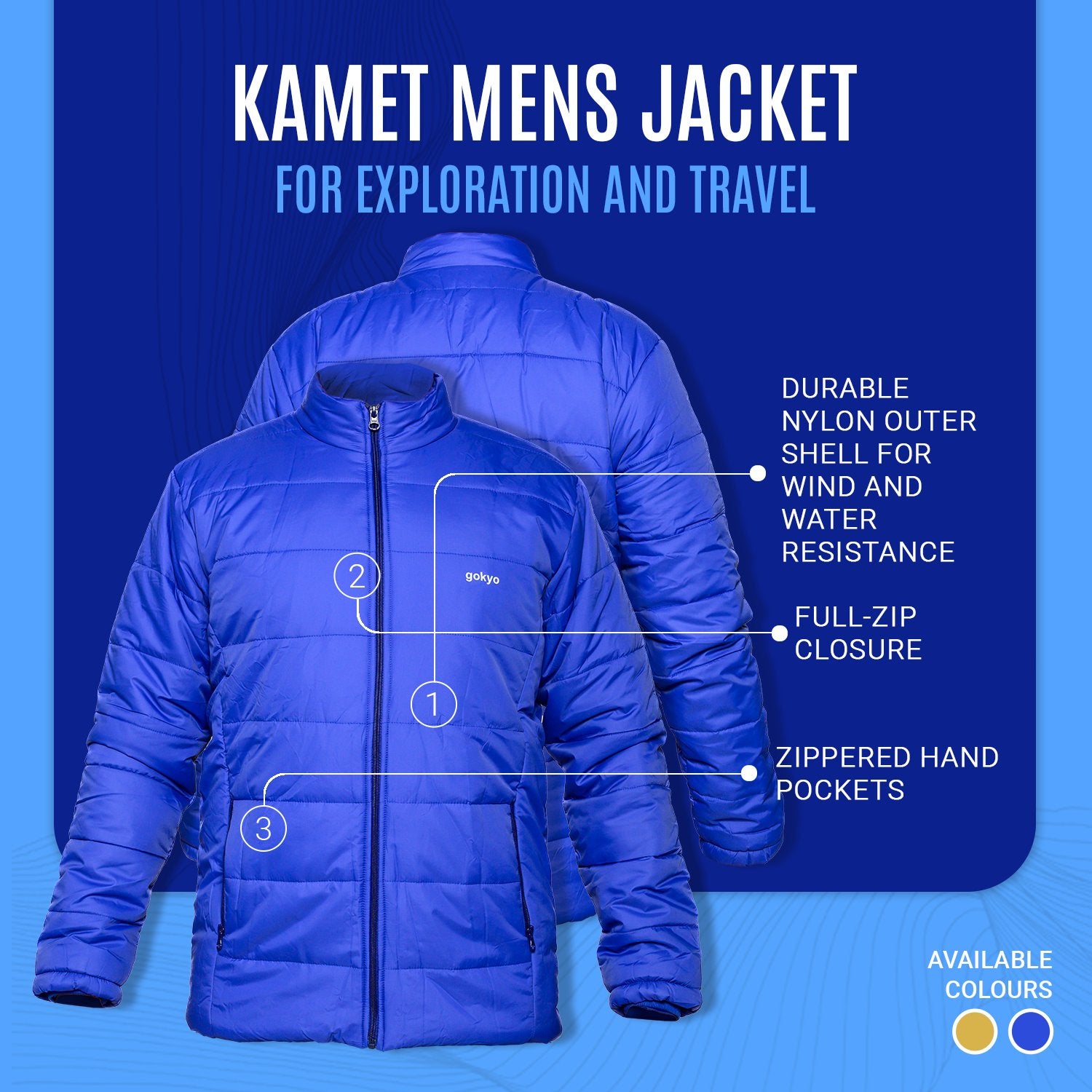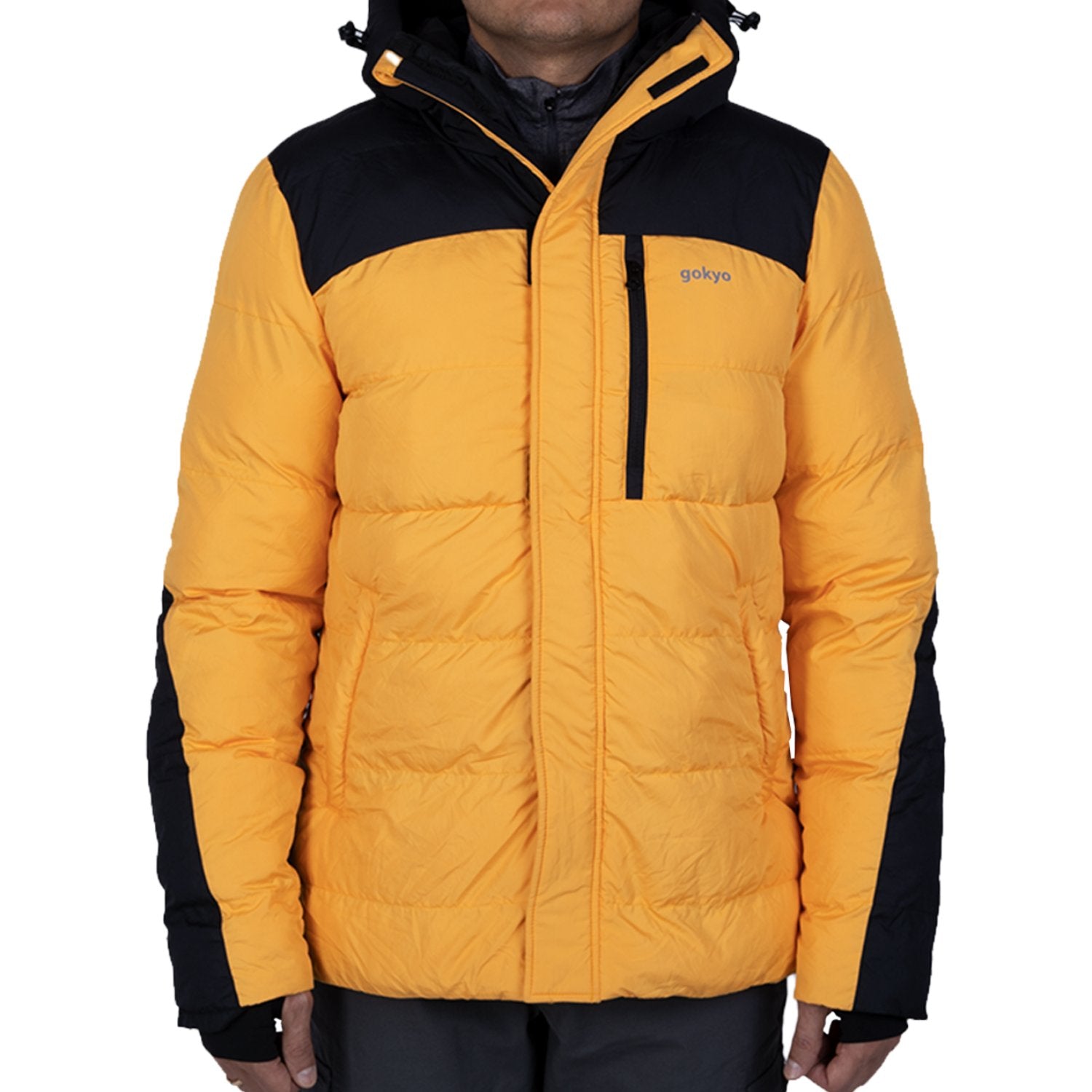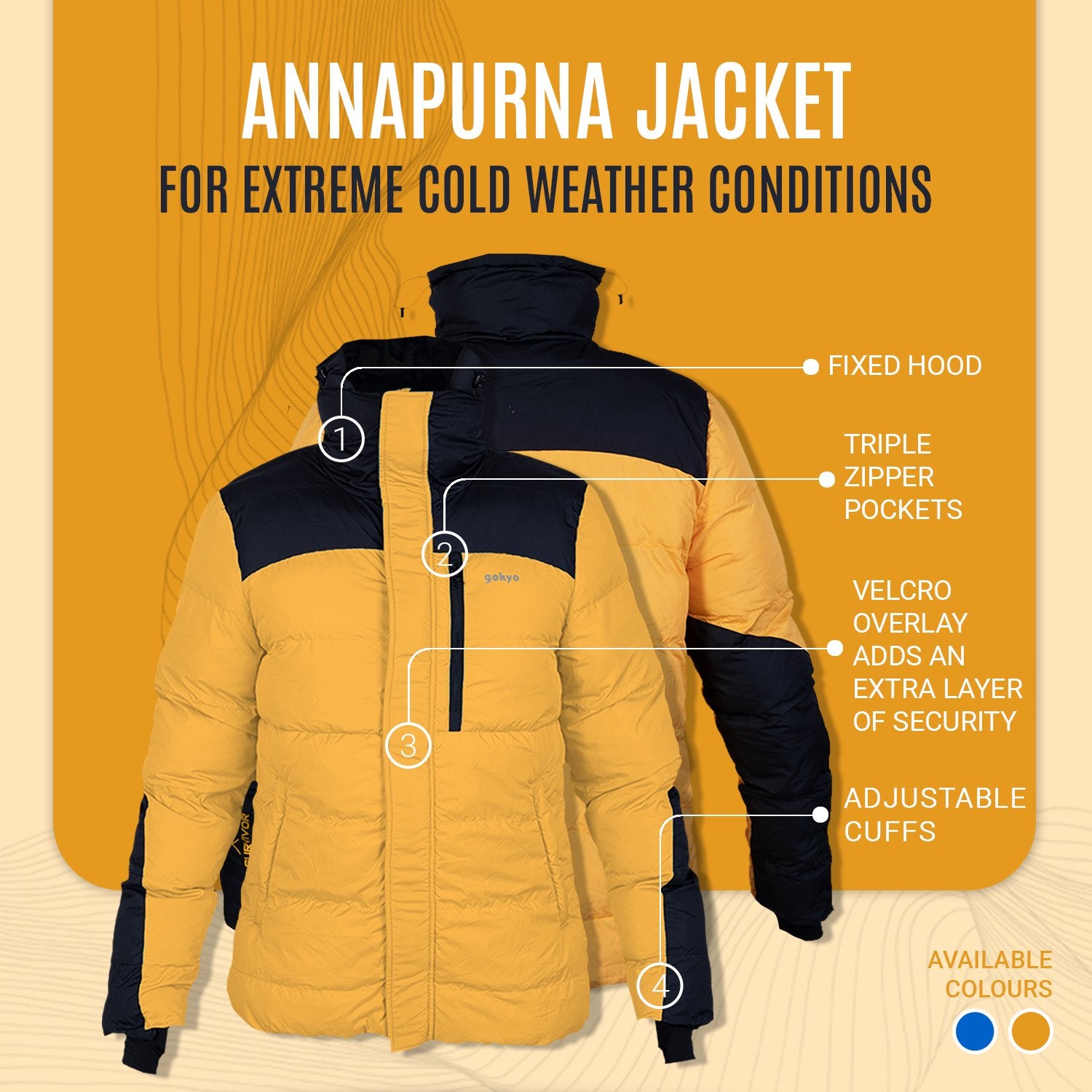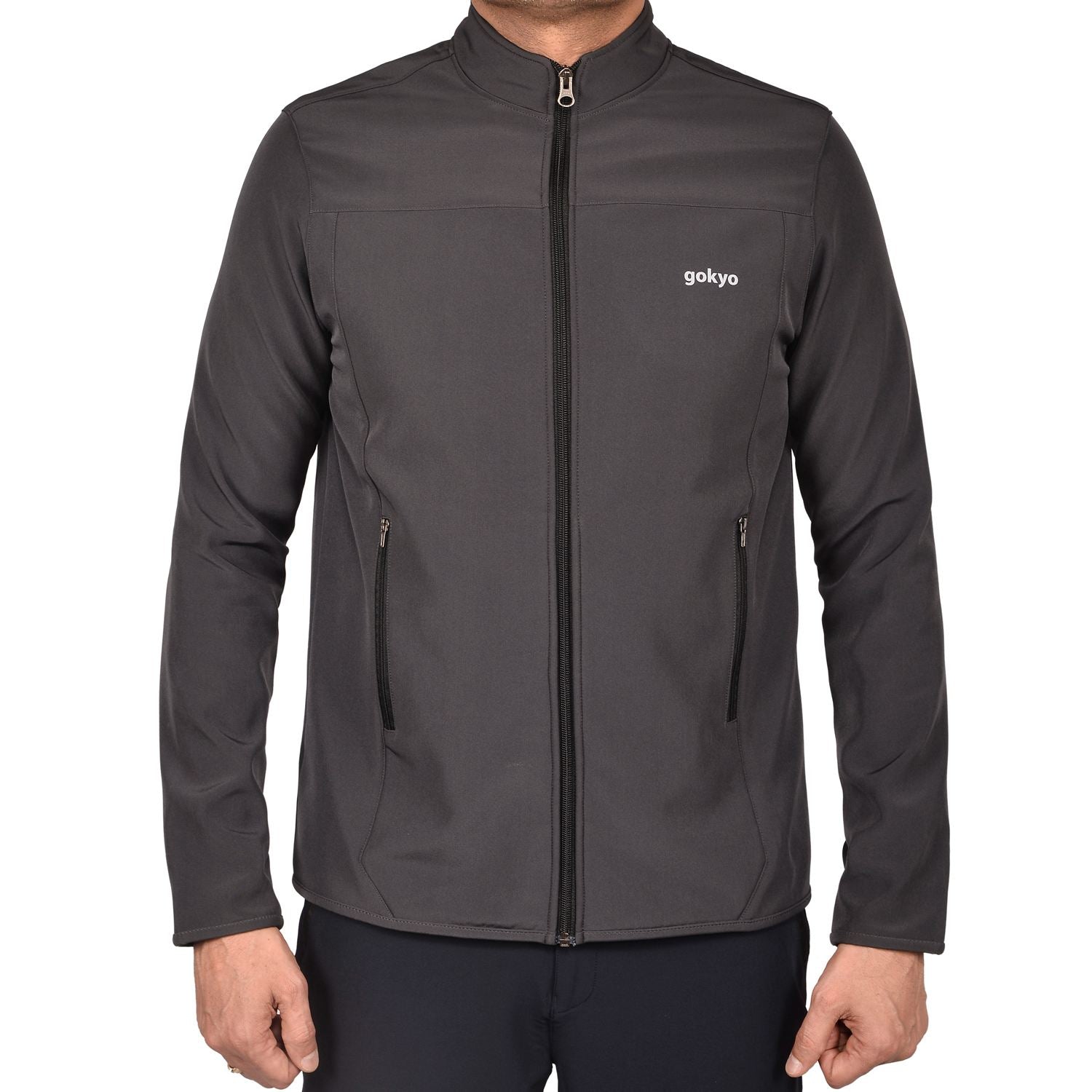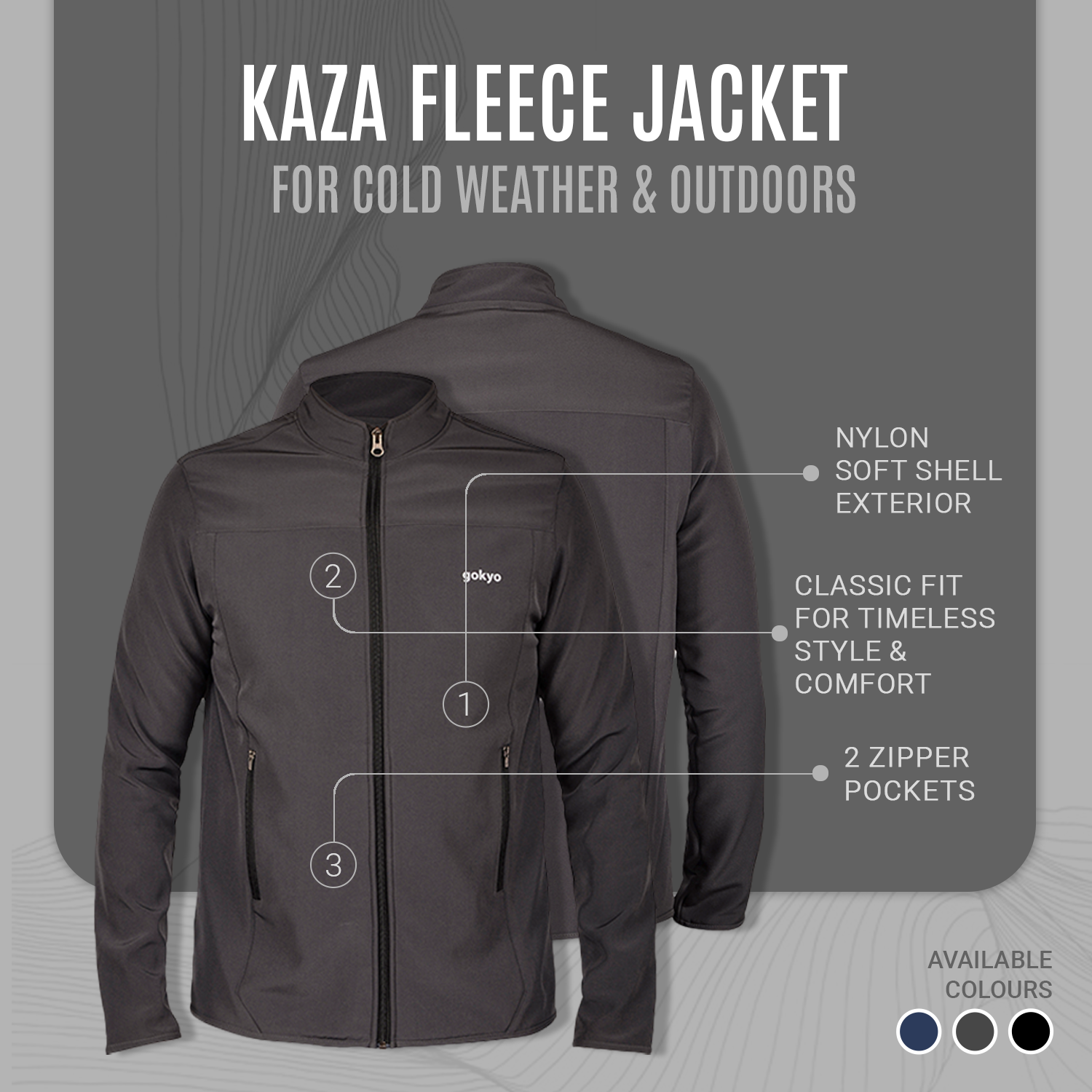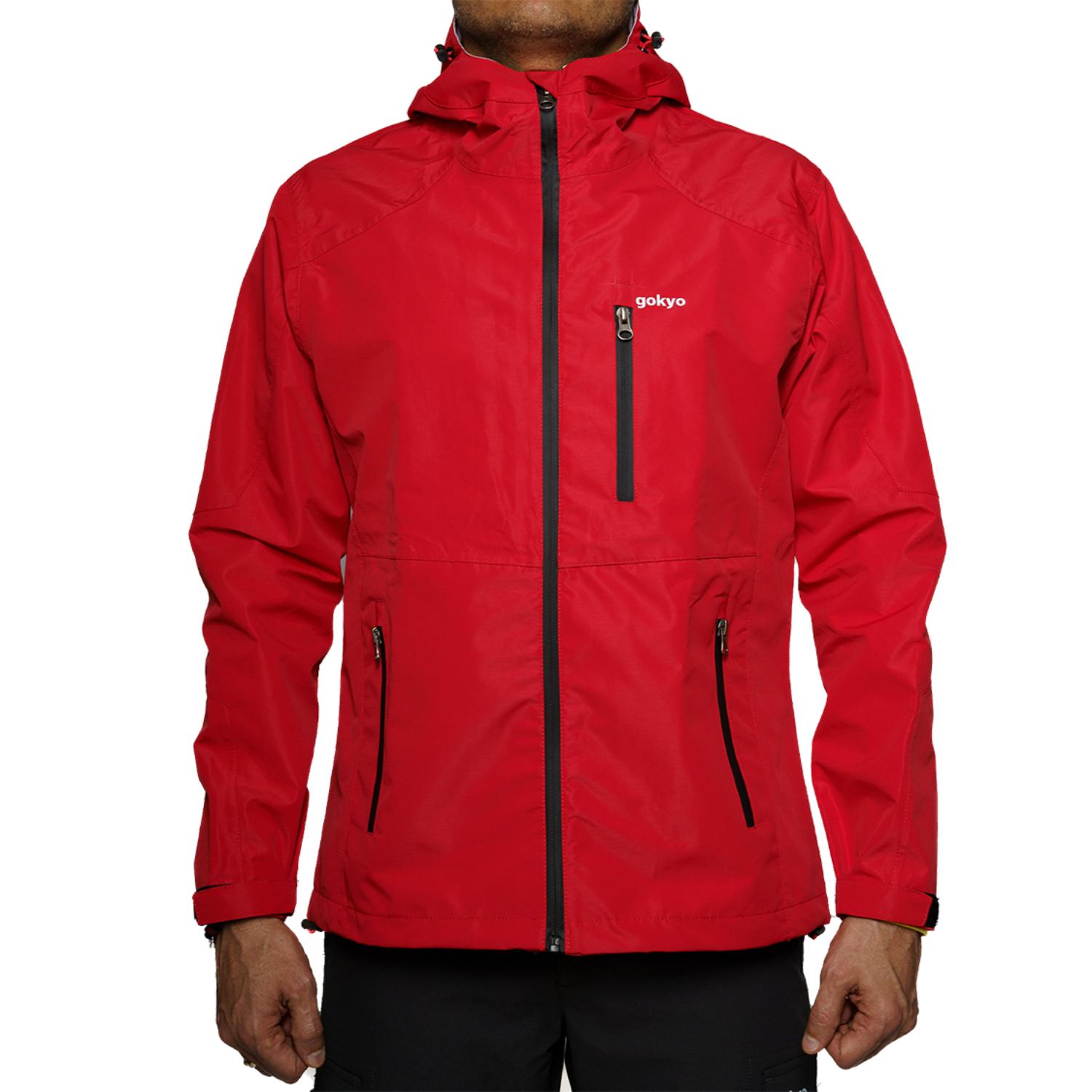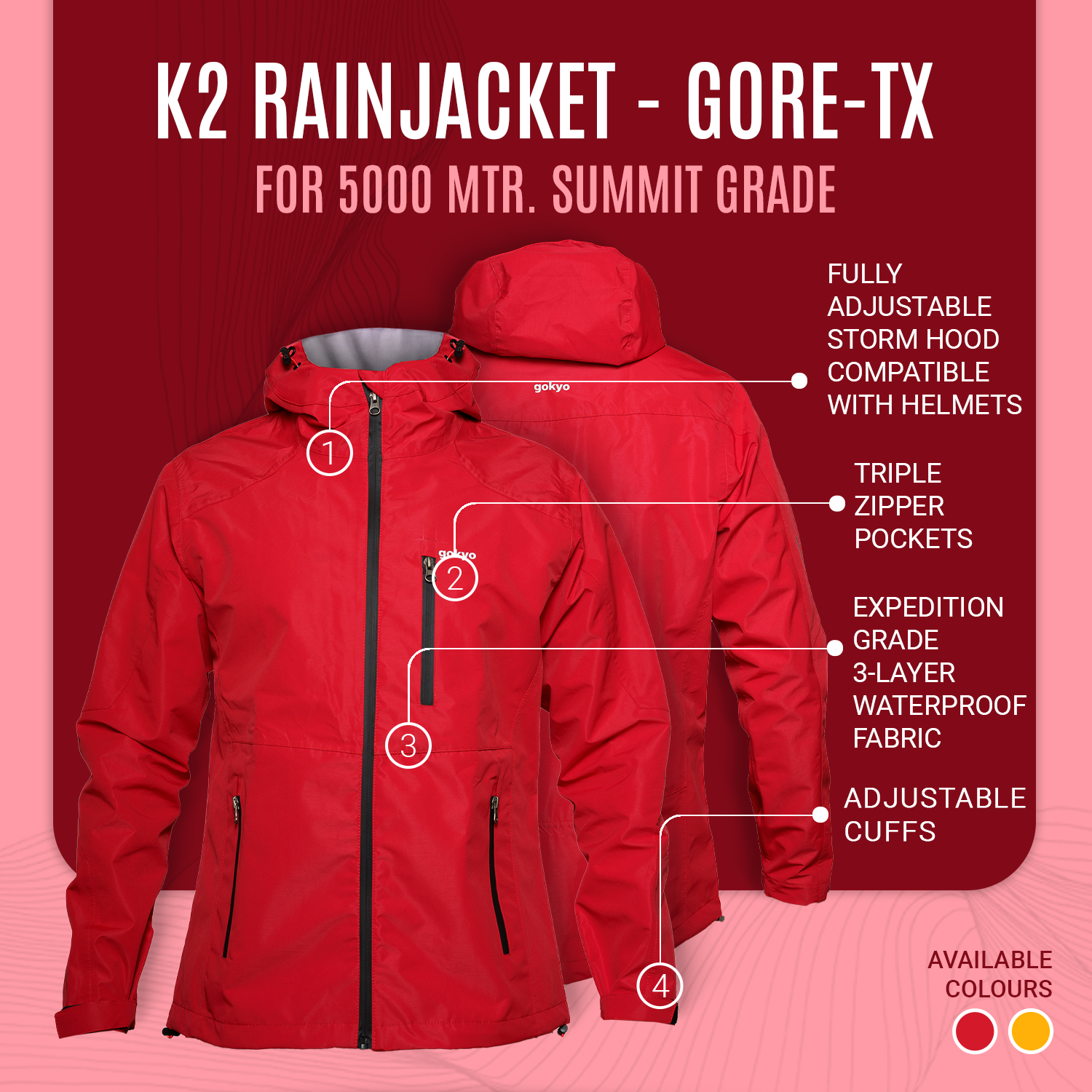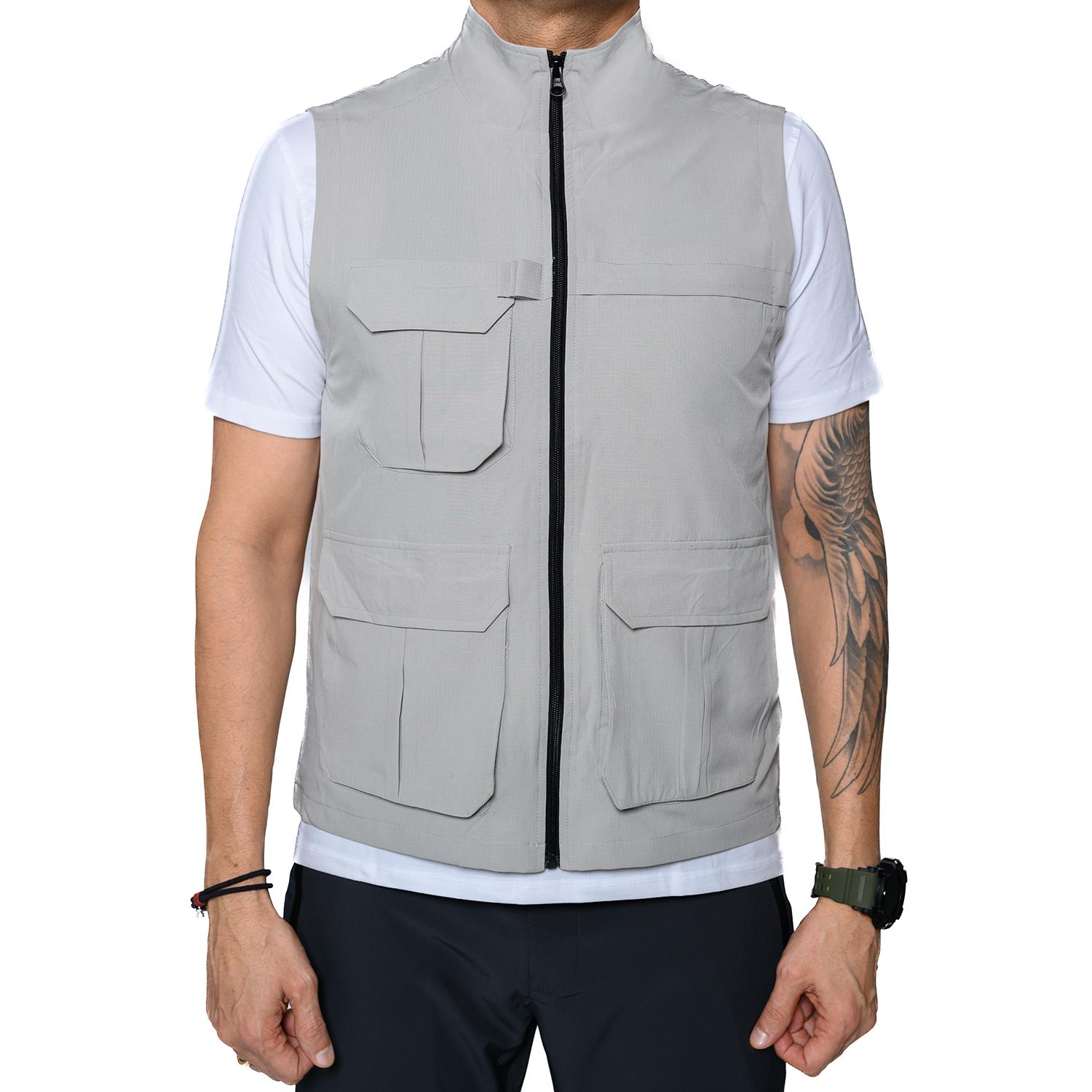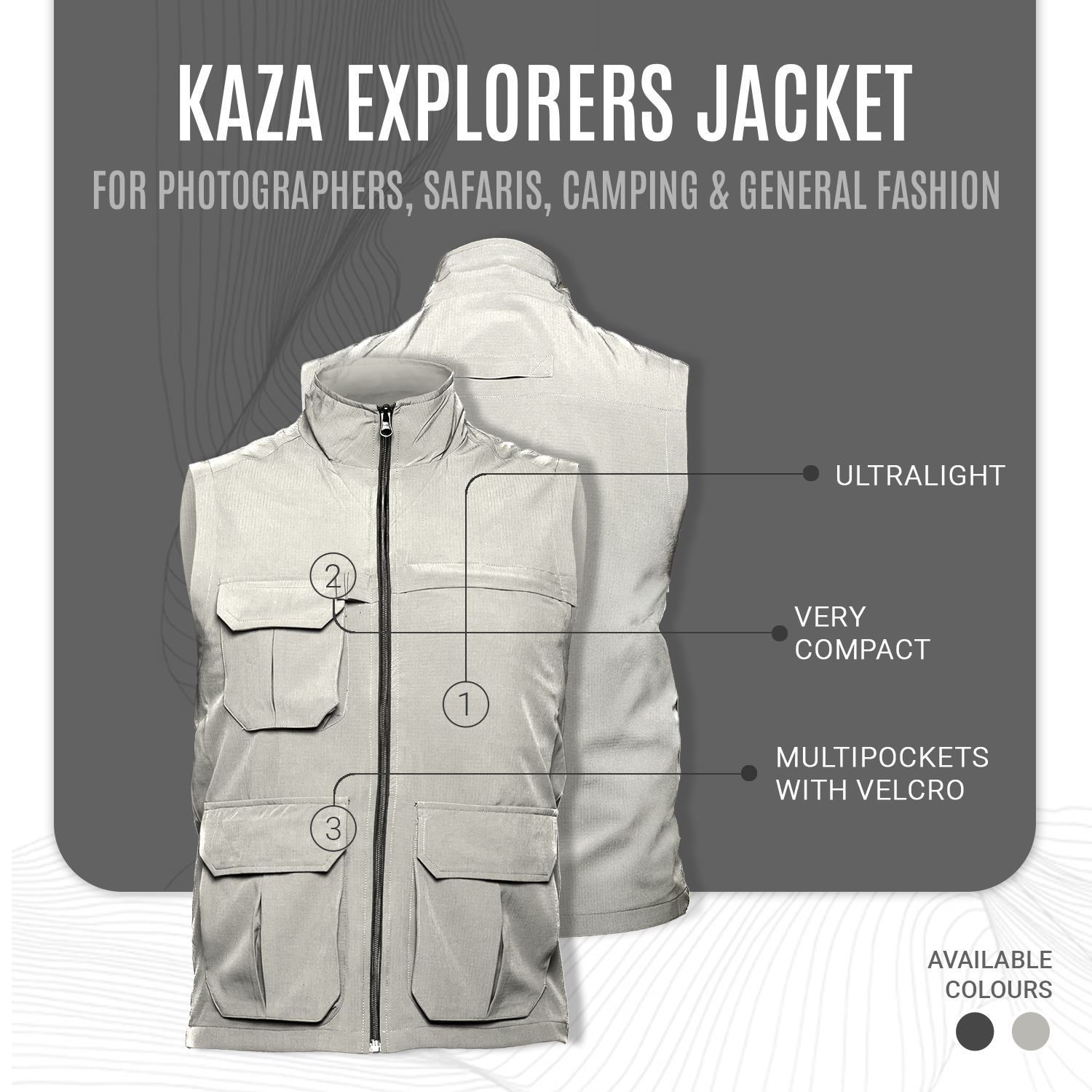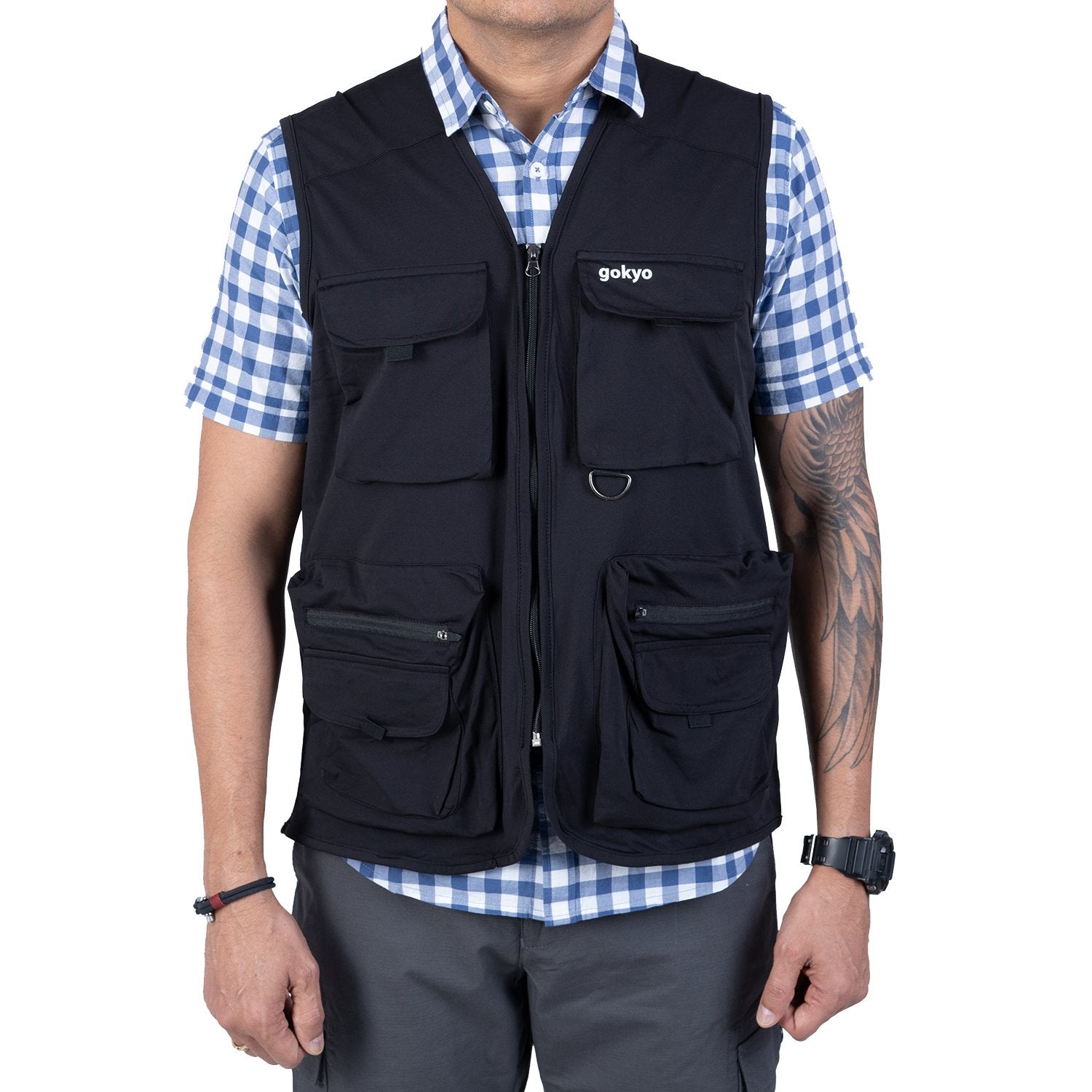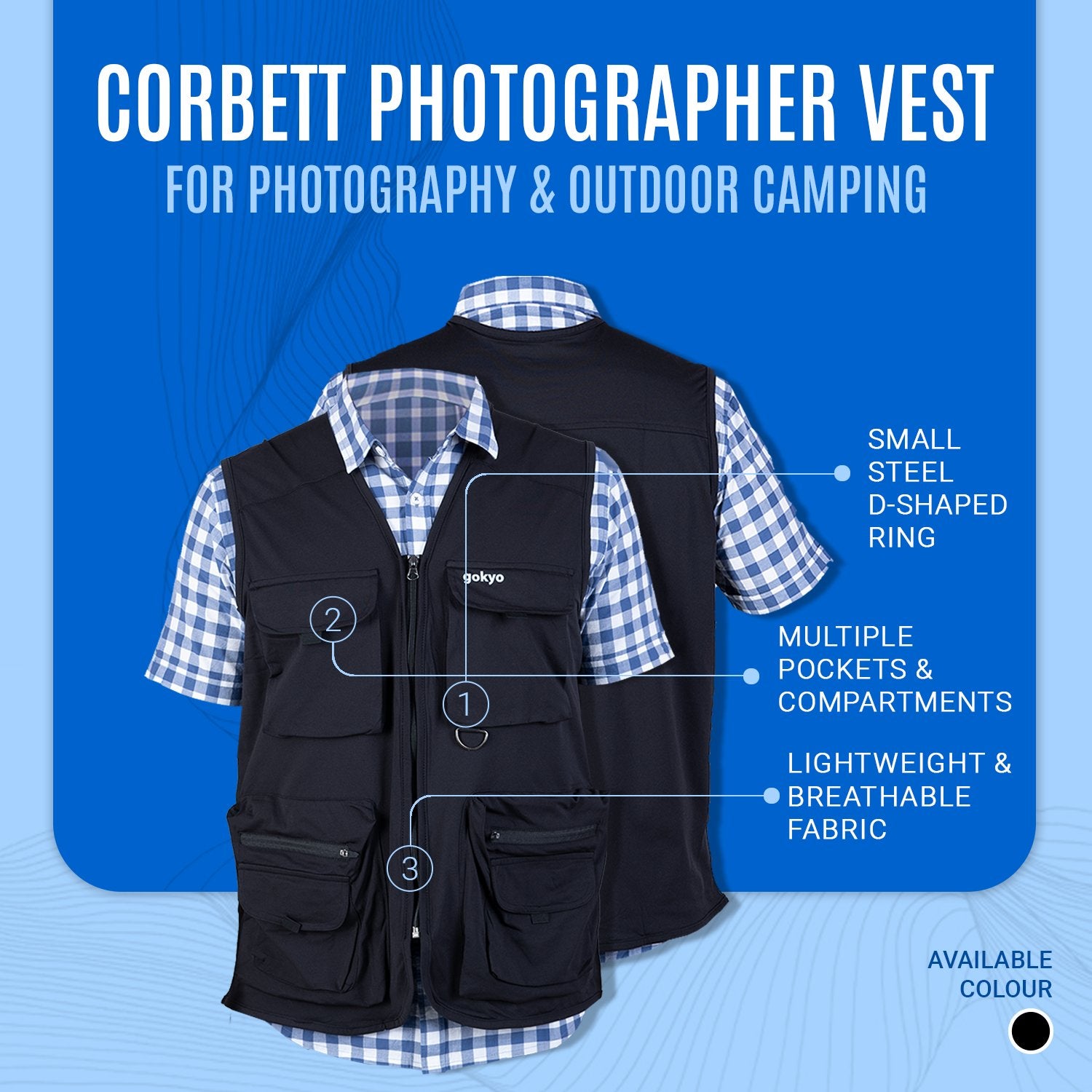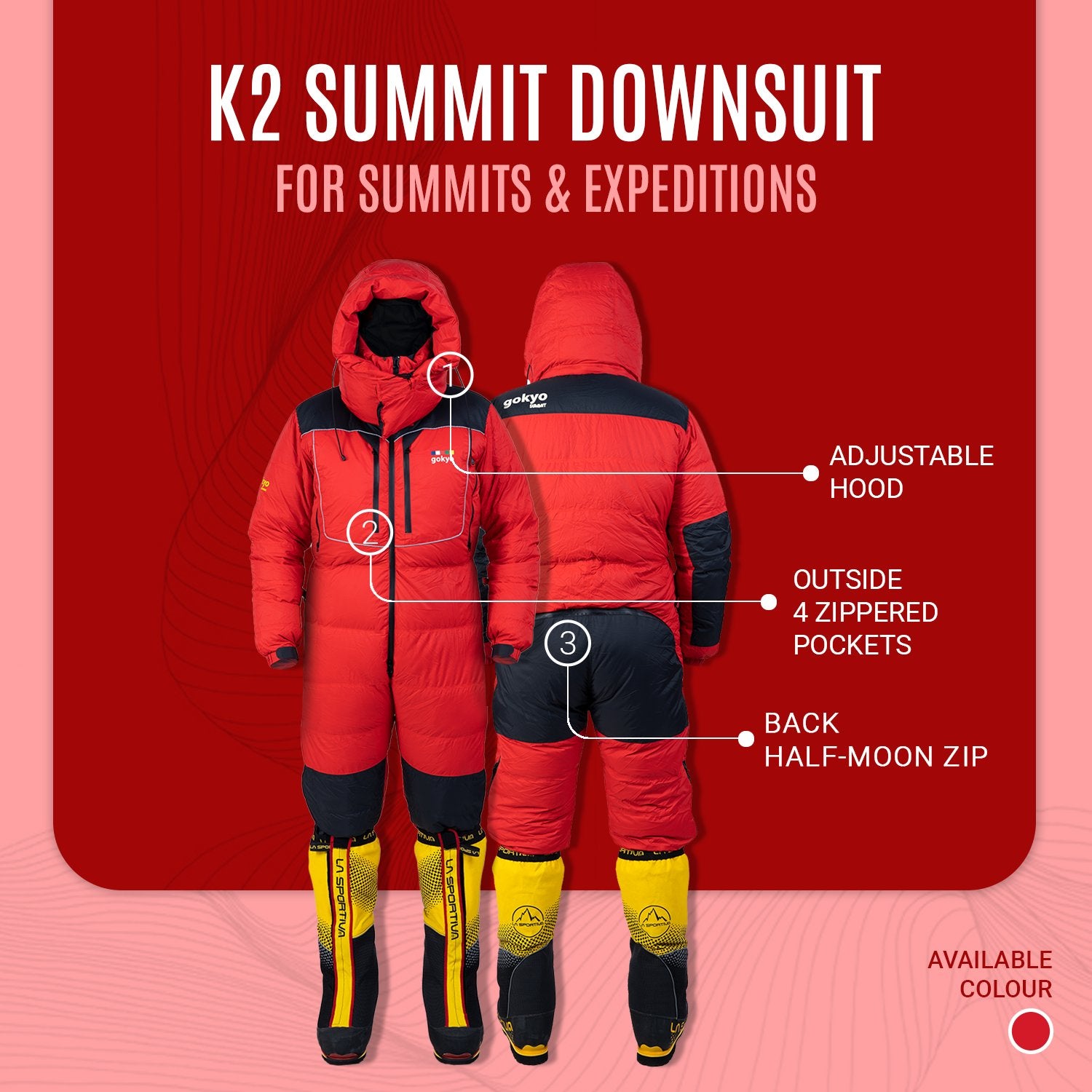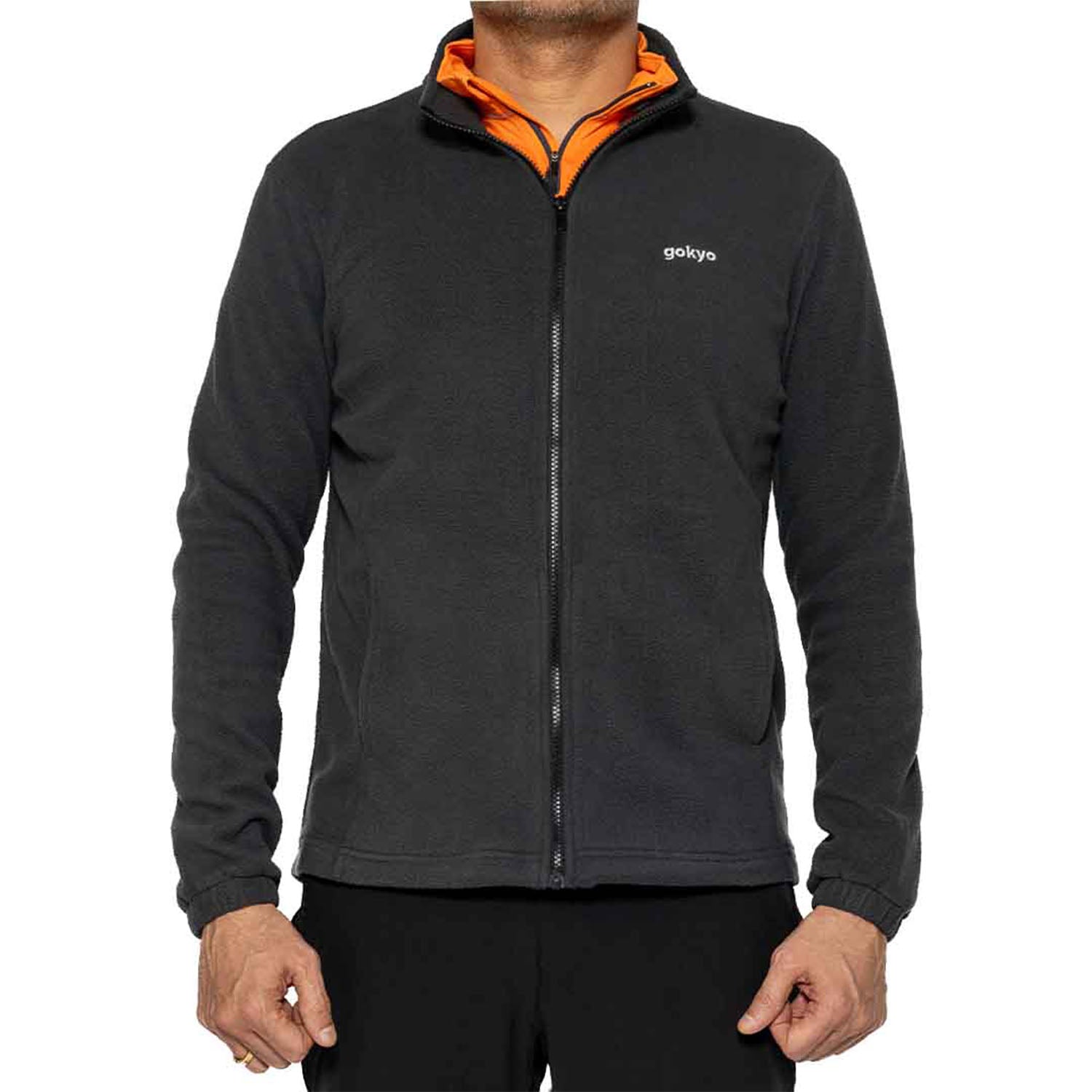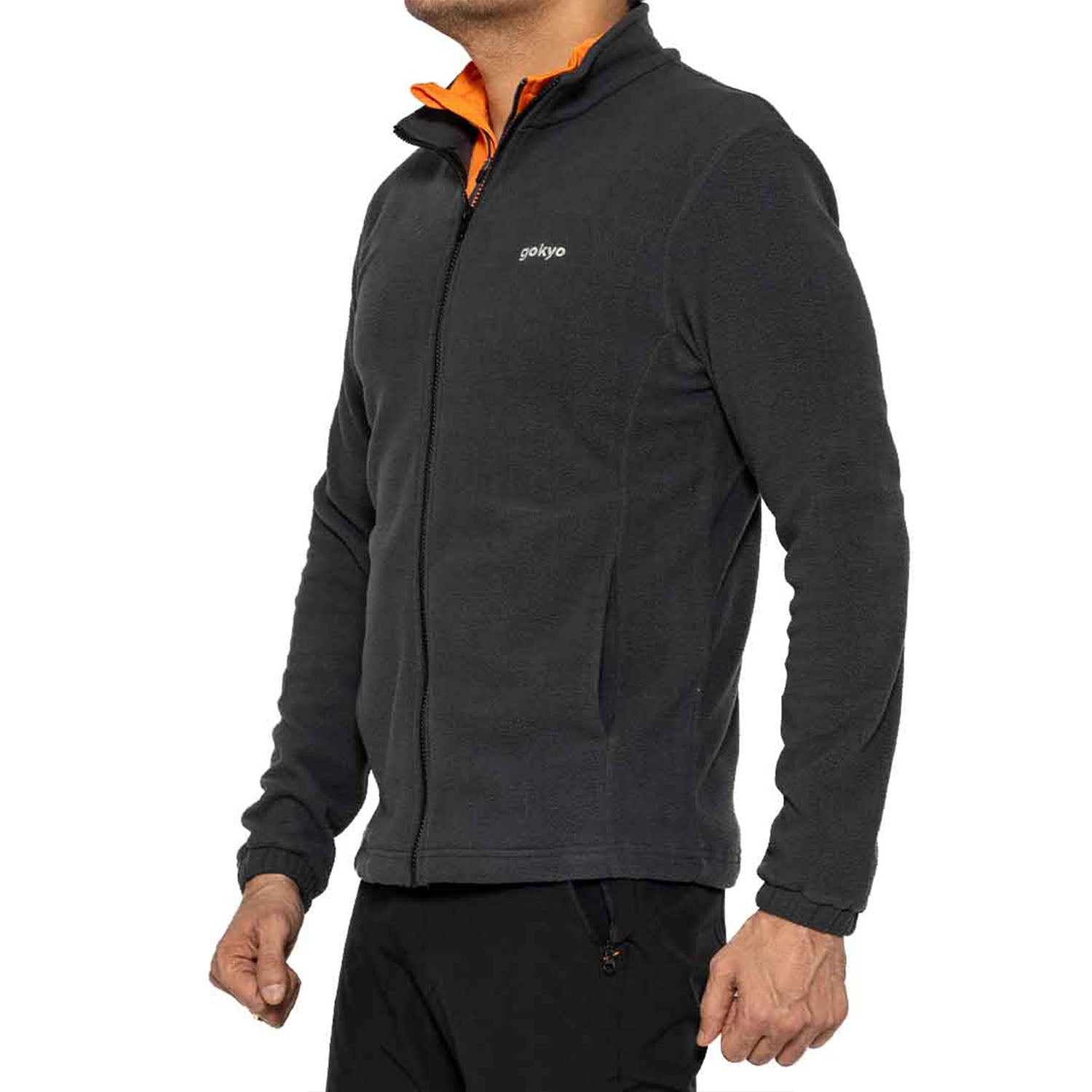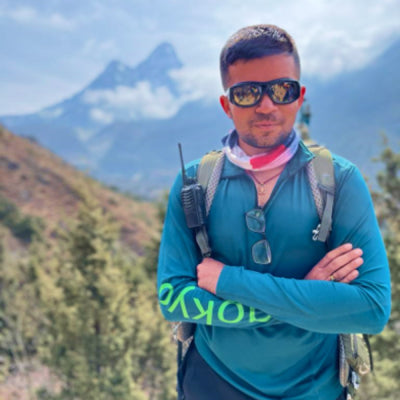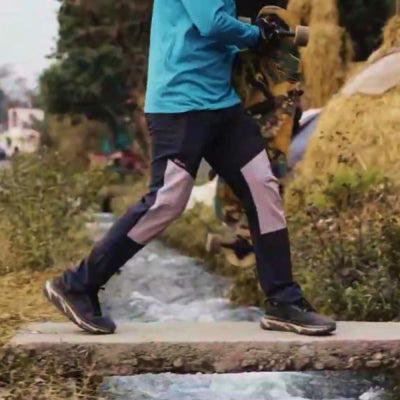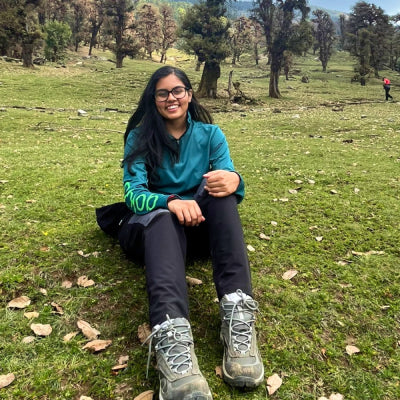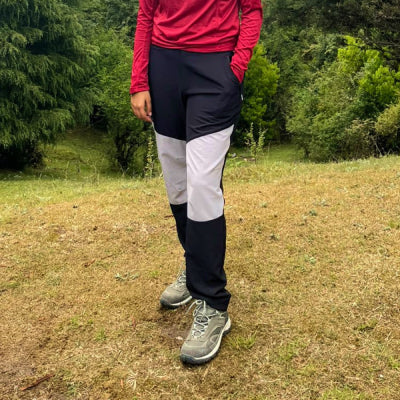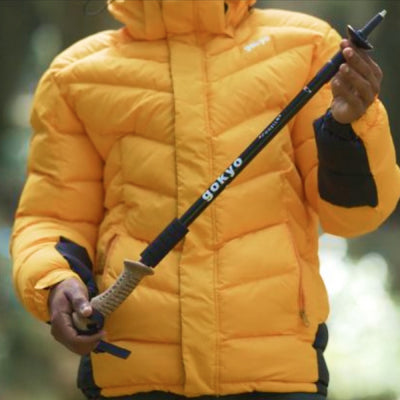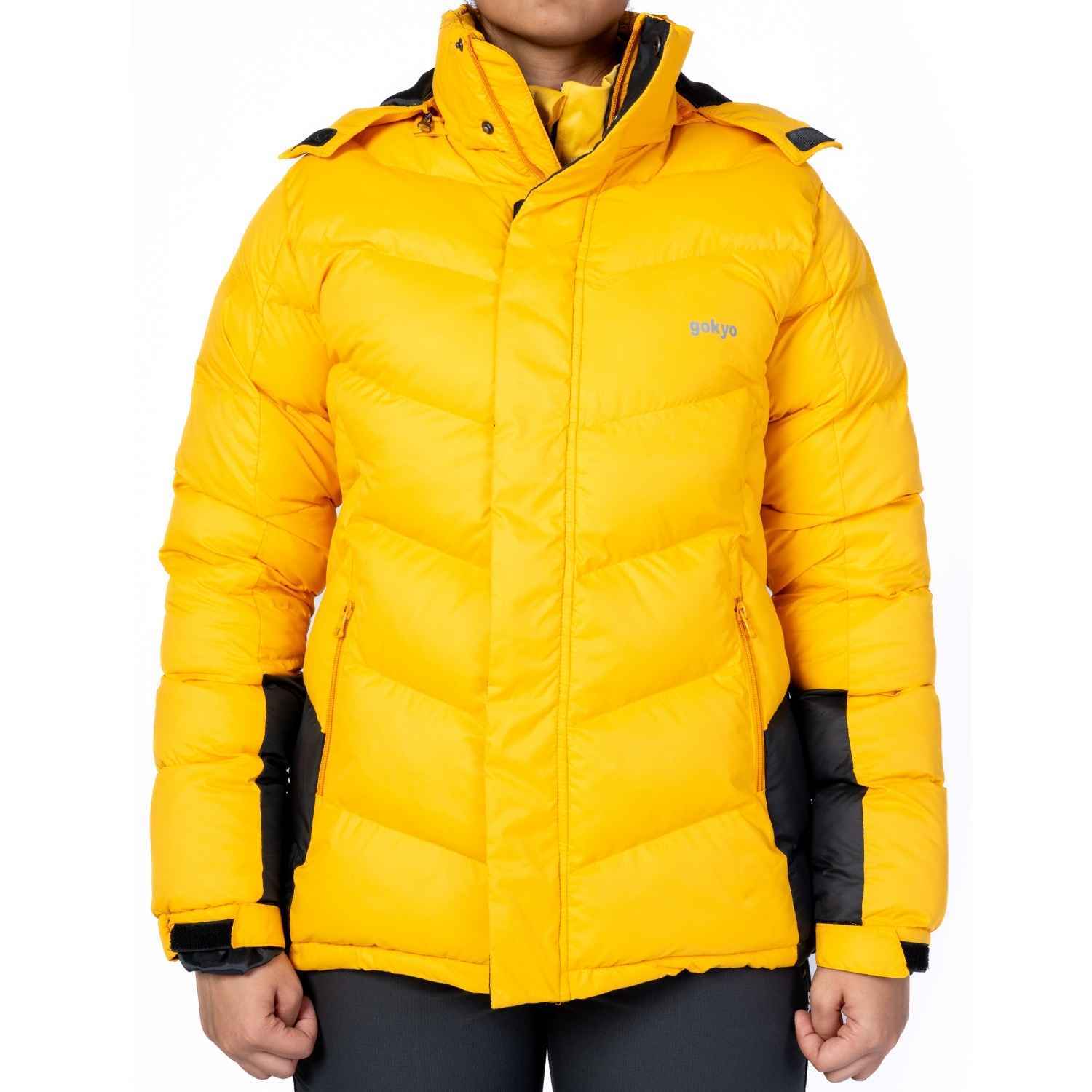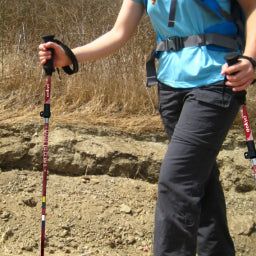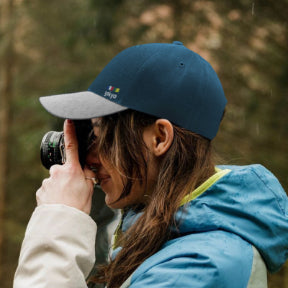Hiking Har Ki Dun This Winter? Here’s the Jacket Every Man Should Pack
Picture being in the serenity of the Himalayas amidst snow-covered pine forests and the quiet of the Har Ki Dun valley. Trekkers regularly refer to the hike as a “walk into a postcard” experience with frozen rivers gleaming in the sun, old villages peeking from the heavy blankets of snow, and the Swargarohini mountains looking like a painting off in the distance.
It may be beautiful, but let’s be real - the beauty of the valley in the winter is bitter cold. It’s not just any cold you'd experience at home or even in the city; we are talking temperatures below freezing, bone-chilling winds screaming down the gorge, and an occasional snow squall that can turn a trail white in less than a minute. Be sure to wear the right jacket if you want to experience the stunning scenery of Har Ki Dun and avoid shuddering in a state of terrified shock. When considering a hike to Har Ki Dun in December or January, the one jacket could literally be the difference between trekking in delightful beauty or suffering like you are in Antarctica.
So, what is the jacket? What is the one jacket every man should pack for this Himalayan experience? Let's get into it.
The Har Ki Dun Winter Challenge
Although Har Ki Dun does not sit at the highest elevation of trekking in the Himalayas, it still has its winter challenges for the trekker who is new to winter camping. Here are some reasons:
1. Unpredictable weather: You could start your day bright and sunny and meet a snow storm at lunch on the way to camp.
2. Temperature Drops: While you are walking outdoors for the day, the high could be in the range of 2-8 °C and at night be as low as -10 °C or worse.
3. Moisture and Wind: Any moisture that might fall (wet snow/mist) combined with the wind can cause your body to lose its heat if you aren't properly protected all the time.
So you might be thinking to yourself, "Well, I guess I will just take my heaviest jacket." This is a mistake that a novice makes—heavy jackets are good at keeping you warm—they are also good at keeping moisture from your sweat. If you are moving for hours with a heavy pack, your sweat will cool down fast. Balance the jacket you wear to keep the wind and wet snow off you while also providing breathability while your body is working.
The Jacket That Balances The Elements
The ideal winter jacket for Har Ki Dun is about insulation — it’s about tailoring a jacket for both warmth and versatility.
When you adventure trek, you often oscillate between high levels of activity (when you're warm and sweating) and a complete loss of mobility (when the other weather attacks). A good men's jacket for these different states ought to:
- Be windproof and waterproof for the wind gusts and some snow flurries.
- Provide insulation without bulk – down simply traps heat and synthetic is an alternative option.
- Be light and compressible so it fits in your backpack when it's on.
- Integrate well into the layering system - slide over thermals, fleece without feeling constricted.
In other words, the right jacket for this trek is your armor in the unpredictable theatre of winter - light enough to move in, strong enough to keep you warm, and versatile enough to switch based on the conditions fighting for your attention.
Outdoor-Ready Jackets for Men
The Layering Game You Won't Forget
Before we pick a "one jacket to rule them all", I'd be remiss to not say it again; the #1 rule for mountain clothing is not, "don't wear only one layer."
This is what I would consider the winning combination for Har Ki Dun:
1. Base Layer: Breathable thermals that can draw sweat away from your skin, while trapping in warmth.
2. Mid Layer: A fleece or sweatshirt that serves as your thermal barrier.
3. Outer Layer: The centerpiece of your ensemble — your winter jacket, which actually takes the brunt of snow, wind, and cold!
This layering system truly keeps you warm when the sun is low, cool enough for climbing, and dry when the weather decides to throw unexpected conditions your way!
A Jacket That’s More Than Utility
Of course, It’s not merely about utility anymore. It used to be that jackets were functional and a necessary item to get later on down the ski trip. Now, kids jackets are made to be functional, designed to perform well and, look good too!
Let's say, you are standing at the Har Ki Dun summit, posing against a snow-covered landscape with peaks surrounding you. You want to feel good in the pictures, not just from what you feel inside, but how you look outside too. Enter modern menswear jackets which have rugged durability and design aesthetics!
Think about it, the jacket is an experience beyond utility. It is no longer something you "have to wear." The right jacket is the experience. It is a part of your next adventure, it is part of your travel story.
Why Every Man Needs the Right Jacket for Har Ki Dun
- Energy Saver: A good men’s winter jacket conserves heat so your body isn’t using extra calories just to stay warm. That means more energy for the actual trek.
- Mood Protector: Nobody enjoys trekking while cold. Staying warm lets you enjoy the views and not worry about how cold it is.
- A Good Long-Term Investment: Har Ki Dun will be your trek this year, but the right gear will serve you for winter after winter — from Kedarkantha, Brahmatal, or even a city trip to Shimla.
Here is a significant key point for this: quality. Brands like Gokyo Outdoor Clothing & Gear are making jackets designed for cold, wet, horrible weather conditions. These jackets are not the jackets you wear when you go to the city. They are jackets designed for trekkers, climbers, and explorers who realize the value of staying warm while keeping it light.
Jackets in Winter: What to Look For
Now that you are aware of that, when shopping for gear designed for trekking, don’t get mesmerized about the look or weight of the item. Ask yourself:
- Is the fabric water-resistant or waterproof?
- Does it have adjustable hoods and cuffs to help keep you less exposed to wind?
- Is it packable to bring it down to a small carry size?
- Can it layer appropriately and not feel bulky?
The ideal jacket satisfies this criteria, and it is precisely for this reason that jackets in winter represent more than clothes — they are survival gear.
Degree Jackets
You may hear trekkers talk about "degree jackets" — which is simply jackets rated for a certain comfort rating in sub-zero temperatures. For Har Ki Dun, you want a jacket that can comfortably handle -10°C to -15°C with proper layering. In the Himalayas, don't take chances with "it should be fine" - the Himalayas are unforgiving to those who don't respect them.
Pro Packing Tips for Har Ki Dun
- Pack Smart, Not Heavy: Pick a jacket that compresses well, you will want to have space to pack essentials in your bag!
- Break It In: Do not ever wear your jacket for the first time on the trek. Break your jacket in with a few local hikes.
- Don't Forget Your Accessories: Gloves, wool socks, and caps are little buddies that pack a powerful punch.
- Hydrate: Cold weather dehydrates you quicker than you think- and dehydration makes you feel colder!
Frequently Asked Questions (FAQs) :
1. Do I really need a specialized evacuation jacket, or can I wear my city coat?
City coats are typically heavy and trap sweat. You need a lightweight, insulated trekking jacket designed for activity and layering on Har Ki Dun.
2. Are jackets available for rent at the trailhead for Har Ki Dun?
There is some gear rental shops at Sankri (starting point of the journey) but the quality and fit for personal gear can be hit or miss. Purchasing your very own jacket is more dependable.
3. Is down insulation better than synthetic insulation?
Down has a superior warmth-to-weight ratio, however, wet conditions can degrade its insulation. Synthetic is better with moisture and also much easier to clean.
4. How do I know if my jacket is warm enough?
Look for the comfort rating. We recommend checking the jacket's comfort rating for Har Ki Dun during the winter and that it contains a rating of -10°C or lower along with layers.
5. Do I need to take more than one jacket?
There is simply no need to take two bulky jackets. You only need one good winter jacket along with thermal layers and a fleece.
6. What is the best way to care for my jacket after the trek?
Most jackets can be washed on a gentler wash cycle or dry cleaned. Following the care label is the best way to preserve insulation and water resistant capabilities of the jacket.
Last Thoughts
Hiking Har Ki Dun during the winter is an experience that feels like stepping into a snow globe in the Himalayas with all its quiet, magic and wonder.. But the same beauty that awes you can just as easily overwhelm you if you’re not prepared. The cold here doesn’t negotiate, and your jacket is your line of defense.
So when you’re choosing, think of it less as clothing and more as your armor against the elements. The right jackets for men don’t just keep you warm — they give you the confidence to soak in the valley’s wonders without distraction. And when it comes to winter jackets for men, brands like Gokyo Outdoor Clothing & Gear have perfected the balance between durability, warmth, and design.
Pack smart, stay warm, and let Har Ki Dun leave you with memories of snowfields and starlit skies — not of chattering teeth.

